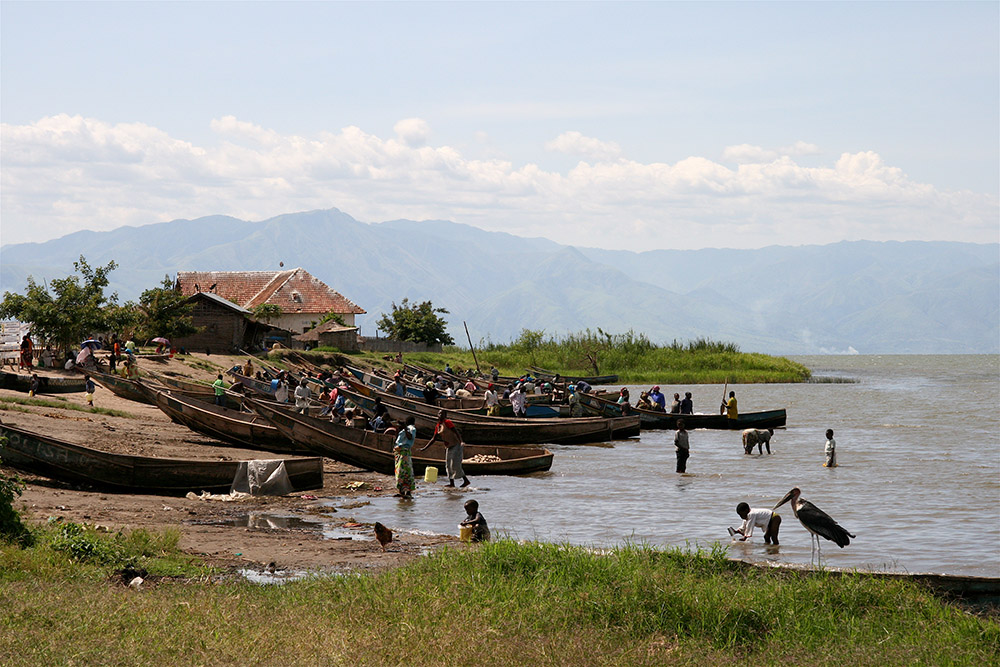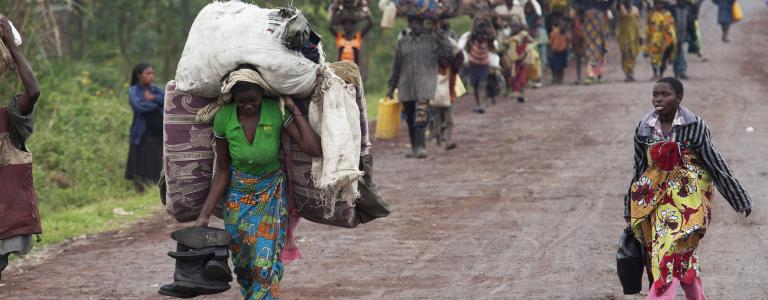How Should Conservation Actors Approach Migration?
Migration has always been an important strategy for coping with variability and change in Africa’s Great Lakes region.
Migration has always been an important strategy for coping with variability and change in Africa’s Great Lakes region.
Traditionally, migration was primarily practiced by pastoralists moving across countries and borders in search of pasture. However, in recent decades political instability, economic pressures, growing populations and environmental change have been driving migration in the region, greatly increasing the number of people on the move.
While environmental degradation has in the past been a driver of migration, changing migration patterns are now also increasingly leading to negative impacts on biodiversity. While true both in the communities left behind—where the loss of natural resource-management capacities can influence the local environment—and along migratory routes, this is particularly the case in those areas struggling with increasing migrant populations. For these areas, the land and rich natural resources they hold represent a strong pull for those populations trying to escape poverty, insecurity and hardship.
This increases the challenge faced by conservationists working in the region. The critical ecosystems of the Great Lakes are already experiencing myriad forms of natural resource and climate stress, and the growing socio-environmental impacts of migration could exacerbate or reinforce existing social tensions and institutional failures, further threatening the critical ecosystems and the livelihoods they support. With the support of the MacArthur Foundation, IISD had an opportunity to examine these impacts and think about new approaches to migration-sensitive conservation in the Great Lakes region. We looked at migration and conservation dynamics in three ecosystems: the Bale Mountains ecosystem in southern Ethiopia, the Misotshi–Kabogo ecosystem in the eastern Democratic Republic of Congo (DRC), and the Lake Albert ecosystem in Buliisa district in northwest Uganda. Lessons can be drawn from each of the case studies—this blog looks at what we found studying the Lake Albert ecosystem.
Lessons from the Buliisa district
Buliisa district, found on the Ugandan shores of Lake Albert, has seen a recent influx of migrants. Most have come from neighbouring Democratic Republic of Congo (DRC), but smaller groups have arrived from Sudan, Rwanda, and other parts of Uganda. Many of the migrants are escaping armed conflict, political instability, and high unemployment. They are being drawn to the district’s rich fishery, which holds the promise of employment on fishing boats and in the economy that surrounds the fishery.
Unfortunately, the population boom has led to overfishing that could, in the long term, lead to the collapse of the Lake Albert fishery. The lake is home to at least 55 species of fish—at least 10 of which are endemic—including the endangered Nile perch. The size of fish caught has steadily decreased over the last five years, and declining stocks have led fishers to encroach on breeding grounds, use illegal fishing methods, and target smaller and less desirable species.
To prevent overfishing, stricter regulations that limit the number of fishing boats and reduce illegal fishing are urgently needed. While some regulations do exist, enforcement is weak, and fish stocks continue to fall.
An inclusive approach for conservation actors
A number of common lessons can be drawn from the case study in Uganda and those in Ethiopia and DRC. These insights can be found here, with Uganda-specific analysis and recommendations laid out in this full report.
Addressing the drivers of migration is typically beyond the mandate of conservation organizations. Efforts should therefore be put into understanding the conservation, migration, and livelihood contexts, and working to addressing the ecosystem impacts of migration. To do this, responses must be designed through careful, extensive consultation with stakeholders. Practitioners should take an inclusive approach, in which migrants are made partners in the dialogue and collaboration among conservation actors, and are given the opportunity to participate in natural resource governance structures, systems, and enforcement.
New toolkit for conservation and migration challenges
Based on the lessons learned from the three case studies, IISD has developed a toolkit on migration and conservation for practitioners. This toolkit is aimed at conservation practitioners from government, civil society or international organizations, as well as local authorities, who work in critical ecosystems and who see human migration as having a negative impact on the area where they are working.
The toolkit is designed to guide conservation actors through a process of analyzing their operating context, assessing migration impacts, and designing response strategies. It presents a series of tools that can be used to accomplish this goal, and describes ways in which the user can ensure an inclusive, conflict- and gender-sensitive response to migration that benefits both the community and the ecosystem.
For more information, read our reports on migration and conservation:
- Migration and Conservation: A toolkit for conservation and development practitioners
- Human Migration and Ecosystems: Insights from the Great Lakes Region of East and Central Africa
- Migration and Conservation in the Misotshi-Kabogo Ecosystem
- Migration and Conservation in the Lake Albert Ecosystem
- Migration and Conservation in the Bale Mountains Ecosystem

Fishing boats on Lake Albert. Photo: Alec Crawford.
You might also be interested in
Senegal's Big LNG Gamble
This report explores Senegal's nascent liquefied nitrogen gas (LNG) industry by assessing the impacts associated with a new fossil fuel-based industry on the country's environment, economy, and society. It does this by responding to three questions: What have been the impacts of the development of LNG on Senegal to date? Is it viable for Senegal to invest further into an industry that is projected to decline? What risks can Senegal expect should it forge ahead with its LNG development plans?
A Balancing Act
With Nigeria's growing population in need of wide-ranging solutions to the multidimensional poverty it faces, a new IISD report outlines how the LNG dash could ultimately leave the economy more vulnerable to external shocks and without a solid domestic foundation.
Pragmatically Integrating Sustainability Into the Reconstruction of Ukraine
IISD's brief investigates the pragmatic implementation of sustainability measures for rebuilding Ukrainian cities and looks into tangible solutions ready to be implemented during and after the war.
Peace, Conflict, and National Adaptation Plan Processes
How can we do more to consider peace and conflict dynamics in climate change adaptation? Read our new guidance note to effectively initiate NAP processes while navigating conflict dynamics.
